Containerizing the application using Docker by implementing CI/CD tool Jenkins 🚀
 Shaik Mustafa
Shaik Mustafa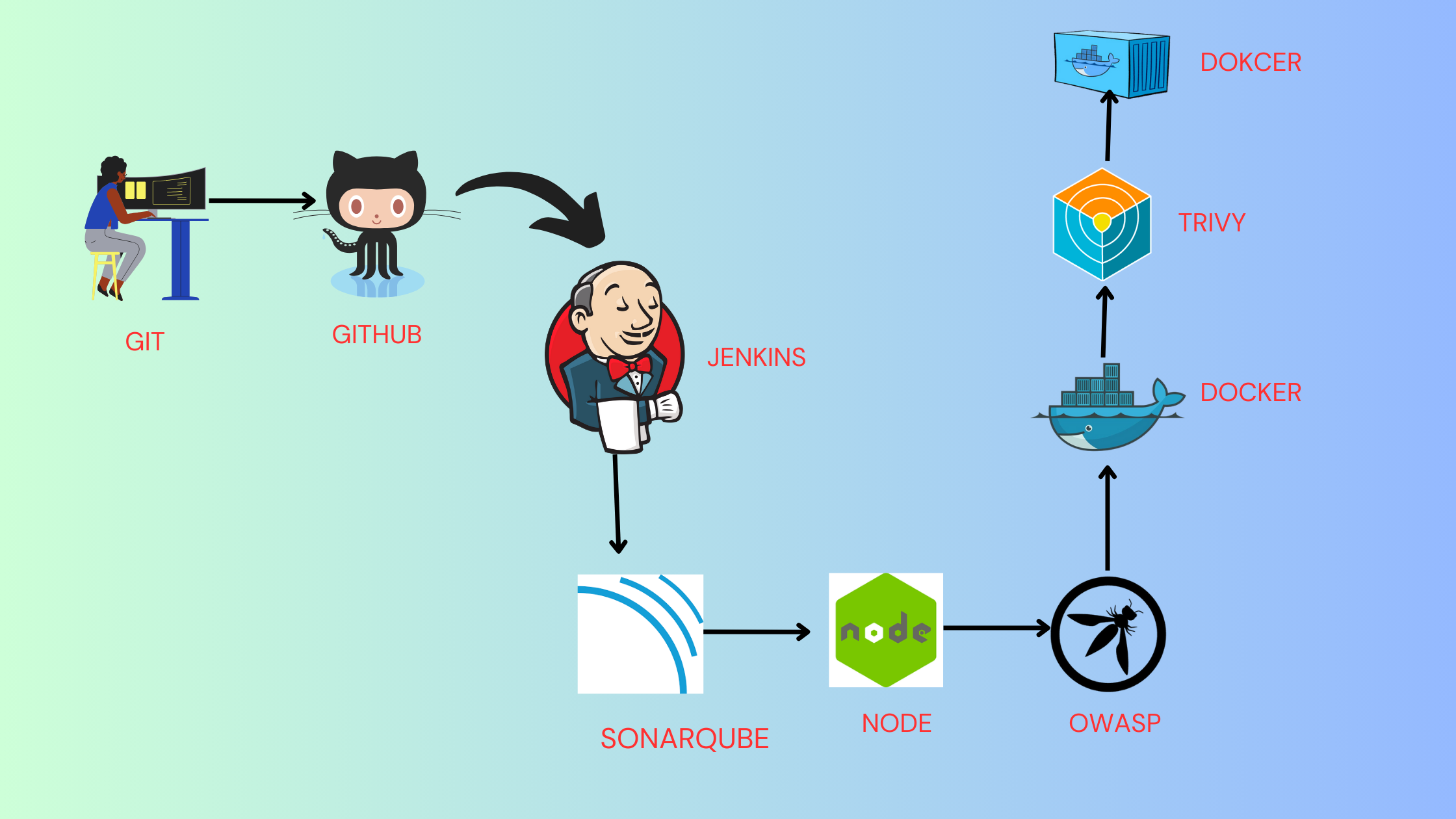
In this project, we leverage Jenkins to create a robust CI/CD pipeline that integrates tools like Docker, Trivy, SonarQube, and OWASP Dependency Check to deliver secure and high-quality software.
Tools used:
GitHub
Jenkins
Docker
OWASP
Trivy
Sonarqube
NodeJS
GitHub
GitHub is a platform for hosting and sharing code using Git. It helps developers collaborate by tracking changes, managing versions, and reviewing code. You can create repositories (repos) to store and organize projects. It also offers features like issue tracking and CI/CD workflows.
Jenkins
Jenkins is an automation tool for building and deploying software. It uses pipelines to automate tasks like testing, building, and deploying code. It supports plugins to integrate with various tools. Jenkins makes Continuous Integration and Continuous Delivery (CI/CD) easy.
Docker
Docker is a tool to create, share, and run lightweight virtualized environments called containers. Containers package code and dependencies together for consistent behavior across systems. It simplifies app deployment and avoids “it works on my machine” issues. Docker images are reusable blueprints for containers.
OWASP
OWASP (Open Web Application Security Project) focuses on improving web application security. It provides resources like the OWASP Top 10, a list of the most critical security risks in web apps. Developers use it as a guide to build secure applications. OWASP also creates free tools for security testing.
Trivy
Trivy is a security tool that scans containers, filesystems, and code for vulnerabilities. It detects issues like outdated dependencies and misconfigurations. Easy to use, it integrates with CI/CD pipelines to ensure secure builds. Trivy helps identify security risks early in the development process.
SonarQube
SonarQube analyzes code to find bugs, vulnerabilities, and code smells (poor practices). It gives a detailed report on code quality and suggests improvements. It supports multiple languages and integrates with CI/CD tools. SonarQube helps teams maintain clean, reliable, and secure code.
Node.js
Node.js is a runtime that lets you run JavaScript outside the browser. It’s great for building fast and scalable server-side applications. Node.js uses non-blocking, event-driven programming for high performance. It’s commonly used for web servers, APIs, and real-time apps.
Key Highlights:
Code Quality Assurance:
- SonarQube is used to analyze source code, ensuring it adheres to coding standards and detecting bugs, code smells, and vulnerabilities.
Vulnerability Scanning:
Trivy scans container images for known vulnerabilities, helping to secure the application at the image level.
OWASP Dependency Check analyzes dependencies for vulnerabilities, ensuring no insecure libraries or frameworks are introduced.
Dockerized Environments:
- All stages of the pipeline run in Dockerized containers, ensuring consistency and simplifying environment management.
CI/CD Workflow:
The pipeline automates build, test, and deploy processes, making it efficient and reliable.
Security and quality checks are seamlessly integrated into the pipeline, ensuring every release is both secure and robust.
GitHub Repo:
Lets implement it step-by-step,
STEP-1: Launch EC2 Instance with below Configurations
AMI : Amazon Linux Kernel 5.10
Instance Type: T2.Large
EBS Volume : 20+ GB
Security Groups : All Traffic
STEP-2: Install Jenkins
#! /bin/bash
sudo wget -O /etc/yum.repos.d/jenkins.repo https://pkg.jenkins.io/redhat-stable/jenkins.repo
sudo rpm --import https://pkg.jenkins.io/redhat-stable/jenkins.io-2023.key
yum install java-17-amazon-corretto -y
yum install jenkins -y
systemctl start jenkins.service
systemctl enable jenkins.service
systemctl status jenkins.service
STEP-3: Install Docker & GIT
yum install docker git -y
systemctl start docker
systemctl status docker
chmod 777 ///var/run/docker.sock
STEP-4: Install Sonarqube
docker run -d --name sonar -p 9000:9000 sonarqube:lts-community
Now our sonarqube is up and running
Now our sonarqube is up and running on Port :9000
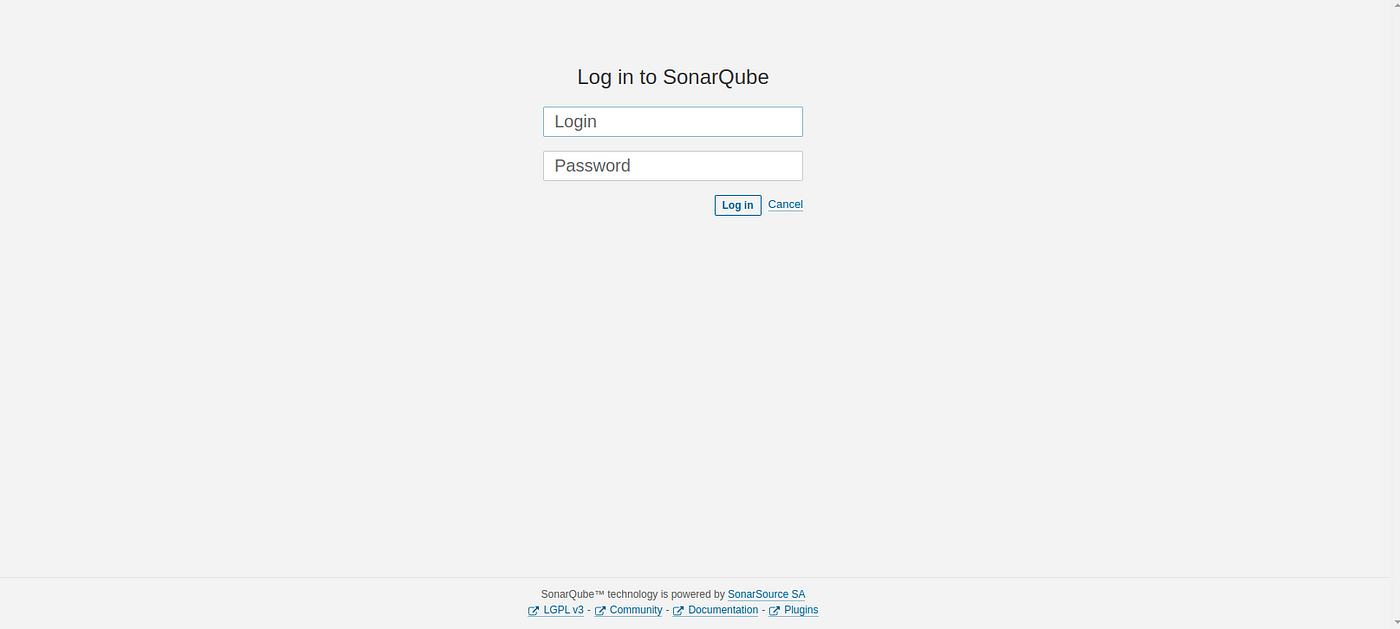
username - admin
password - admin
Now our sonarqube is up and running

Update New password, This is Sonar Dashboard.
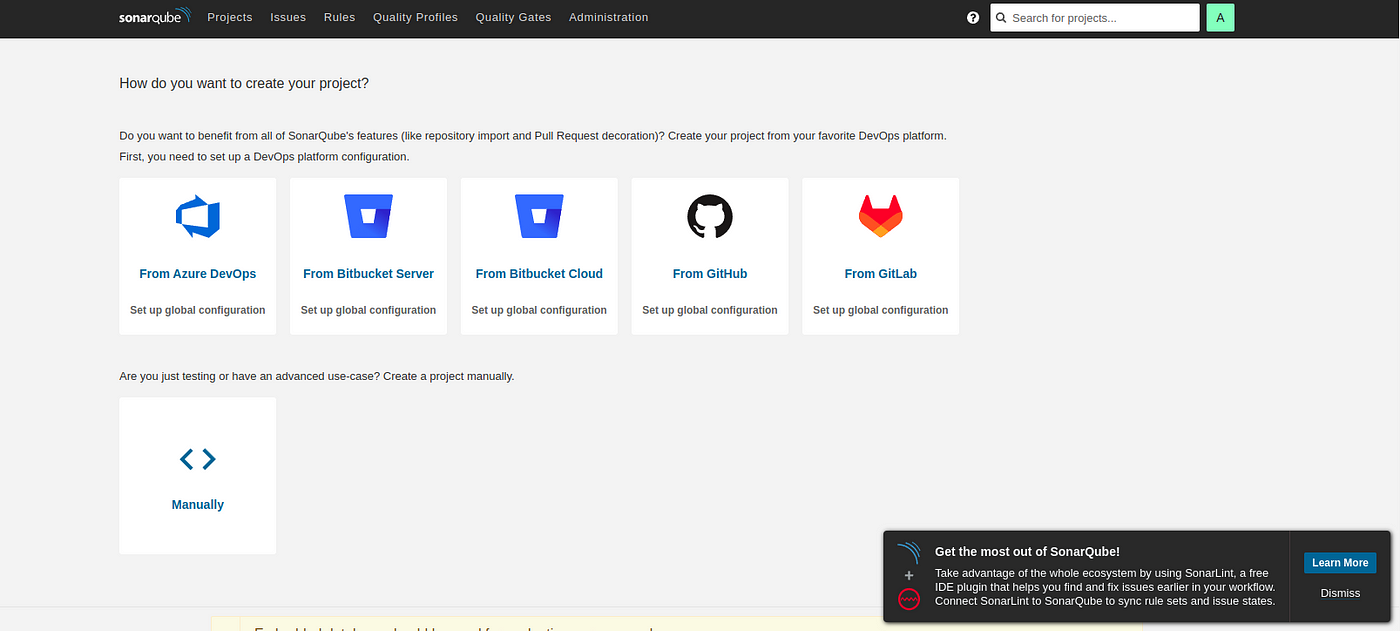
STEP-5: Install Trivy
wget https://github.com/aquasecurity/trivy/releases/download/v0.18.3/trivy_0.18.3_Linux-64bit.tar.gz
tar zxvf trivy_0.18.3_Linux-64bit.tar.gz
sudo mv trivy /usr/local/bin/
echo 'export PATH=$PATH:/usr/local/bin/' >> ~/.bashrc
source .bashrc
trivy --version
STEP-6: Install the following dependencies on Jenkins
Sonarqube Scanner
Eclipse Temurin Installer
NodeJS
OWASP Dependency-Check
Docker Pipeline
STEP-7: Integrate all the tools to Jenkins
Go to Jenkins Dashboard → Manage Jenkins → Tools
JDK installations — v17
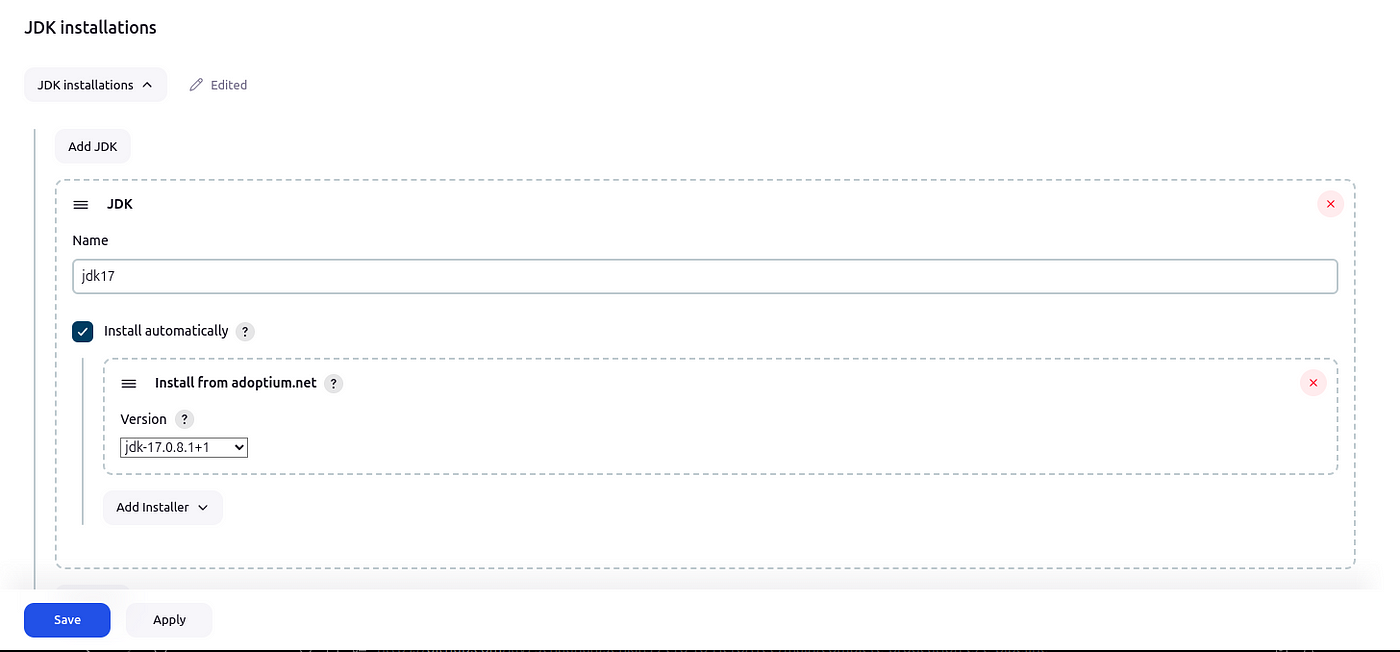
NodeJS installations — v 16
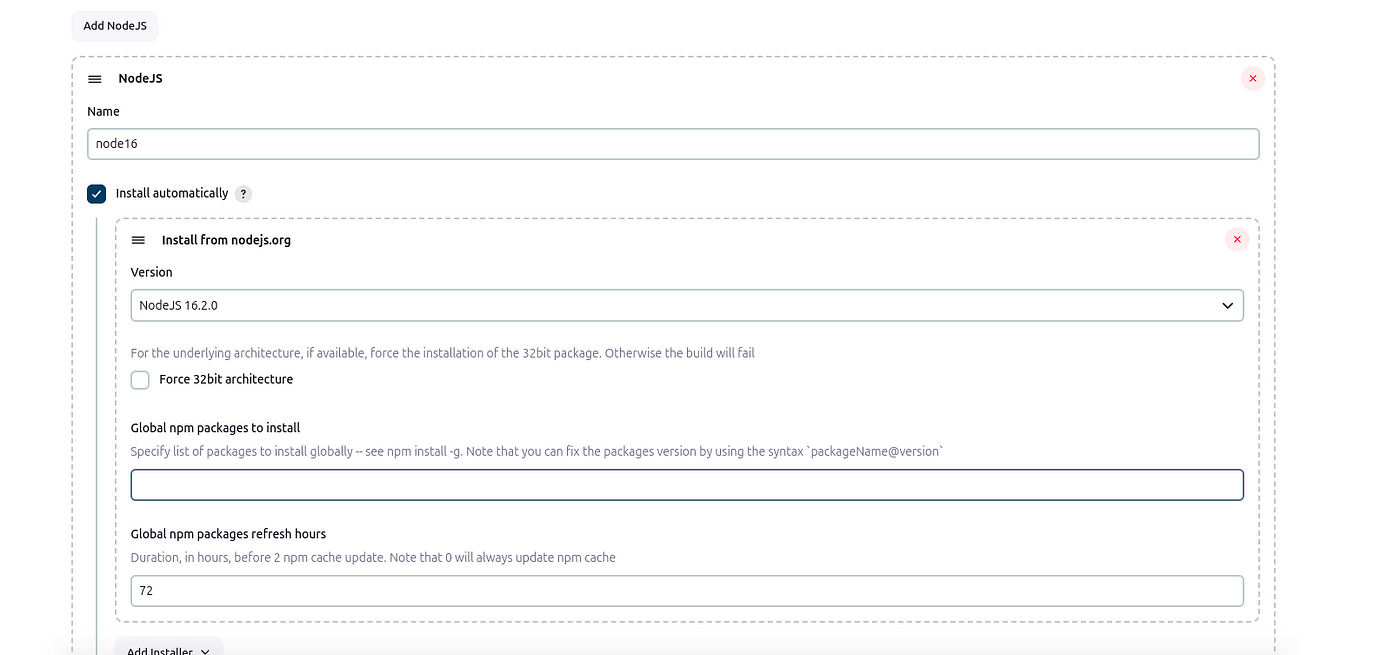
Dependency-Check installations
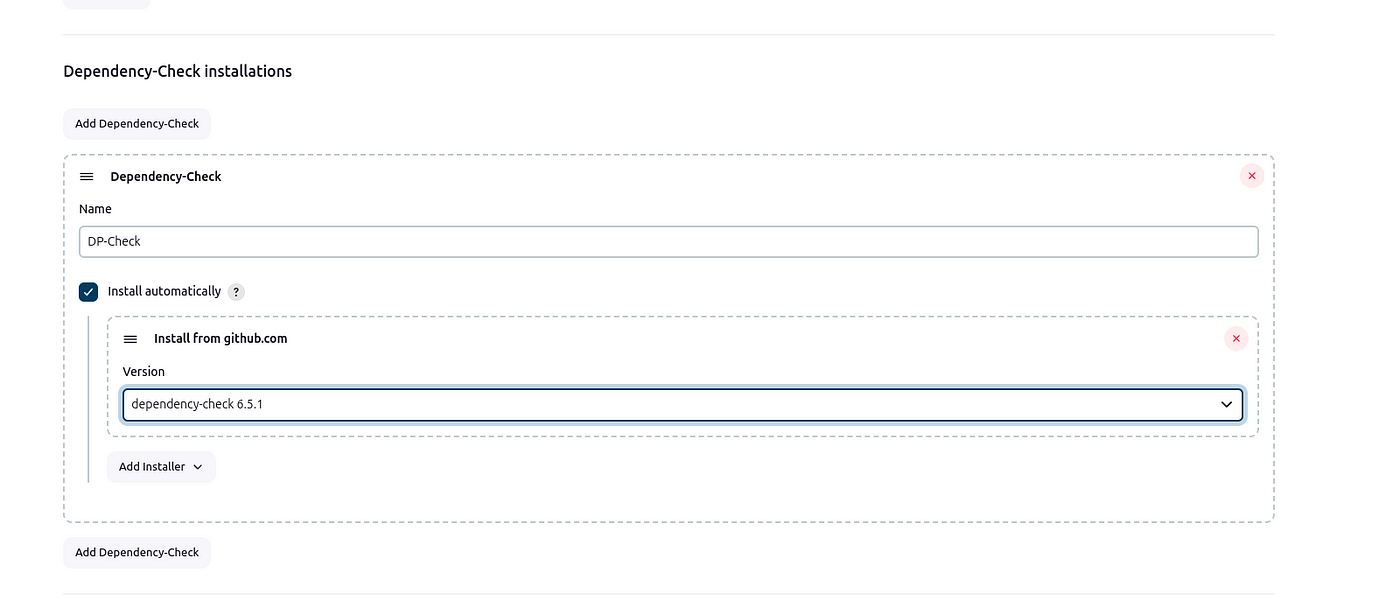
SonarQube Scanner installations
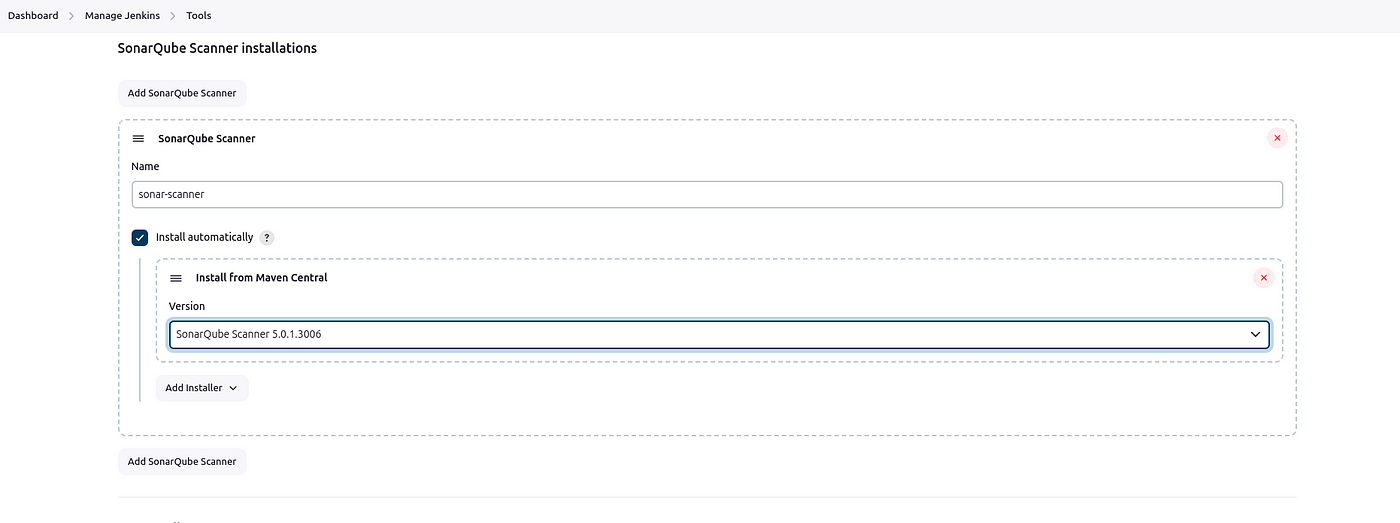
After that click on apply
STEP-8: Configure Sonar with Jenkins
Goto your Sonarqube Server. Click on Administration → Security → Users → Click on Tokens and Update Token → Give it a name → and click on Generate Token

click on update Token

Create a token with a name and generate
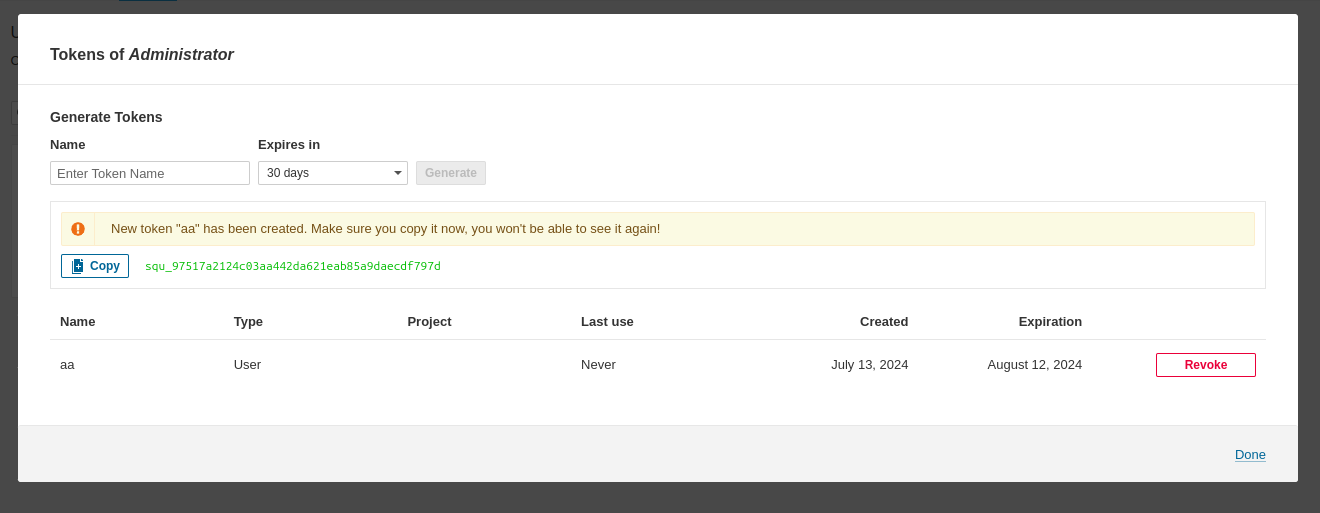
copy Token
Goto Jenkins Dashboard → Manage Jenkins → Credentials → System → Global credentials (unrestricted) → Add Secret Text
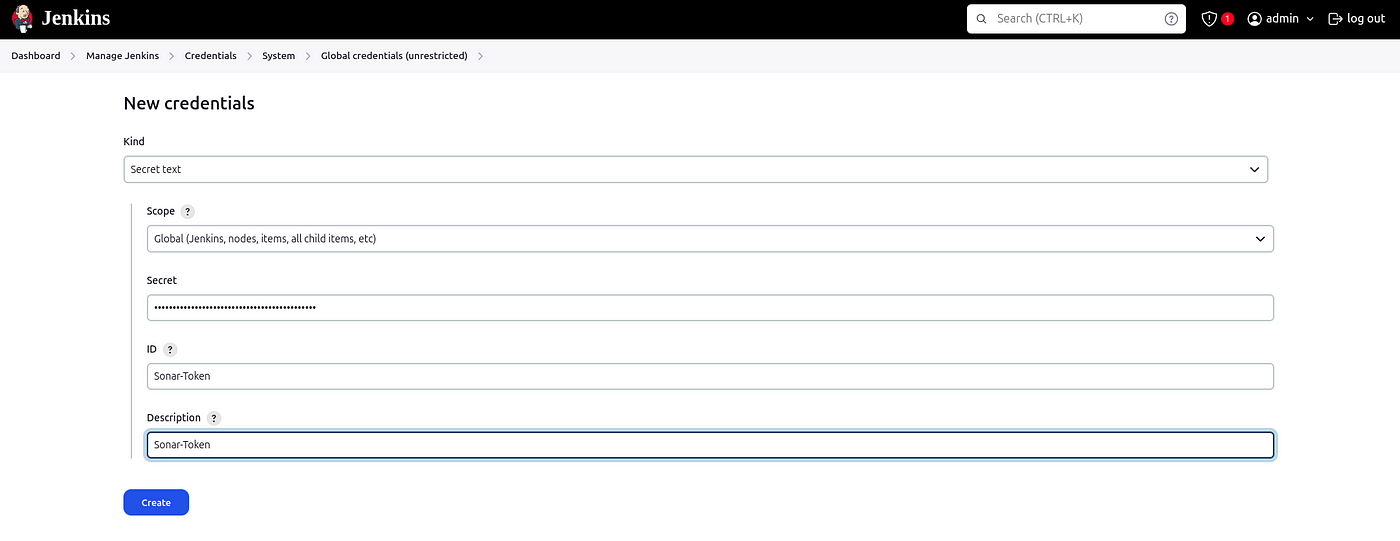
Enter detail and click on create

Now, go to Dashboard → Manage Jenkins → System and Add like the below image.
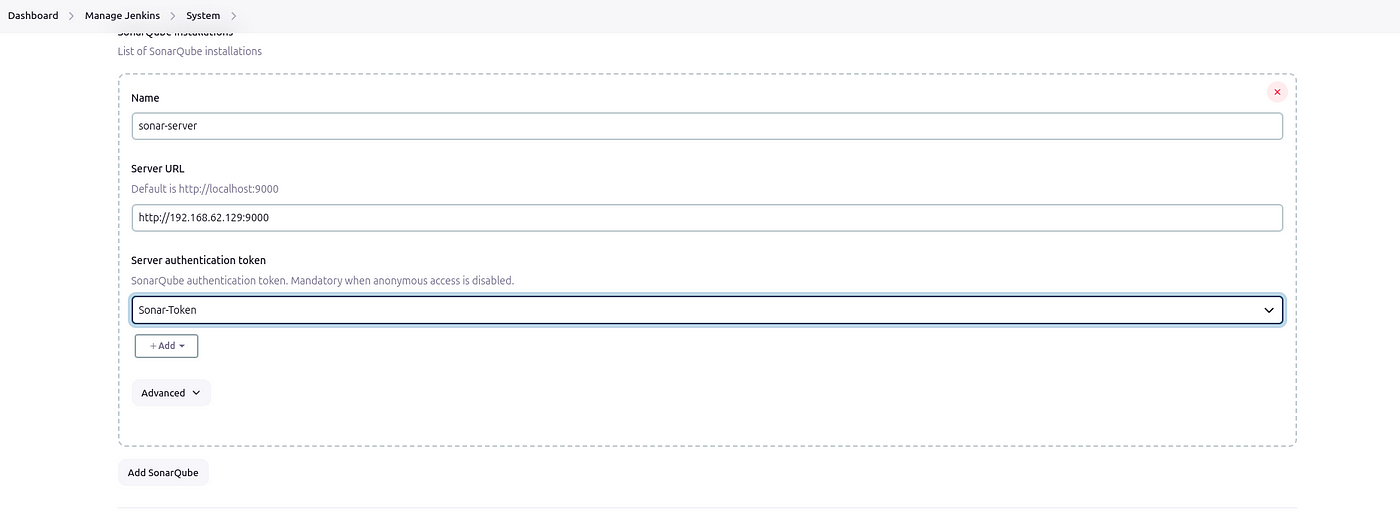
Click on Apply and Save
STEP-9: Add Dockerhub Credentials
Goto Jenkins Dashboard → Manage Jenkins → Credentials → System → Global credentials (unrestricted) → Add Username and password
username : dockerhub-username
password: dockerhub-password
credentials id : docker-password
Click on Apply and Save
STEP-10: Create a Jenkins Job
Goto Jenkins Dashboard create a job as My-Deployment Name, select pipeline and click on ok.
pipeline {
agent any
tools {
jdk 'jdk17'
nodejs 'node16'
}
environment {
SCANNER_HOME=tool 'sonar-server'
}
stages {
stage ("clean workspace") {
steps {
cleanWs()
}
}
stage ("Checkout from Git") {
steps {
git branch: 'main', url: 'https://github.com/devops0014/Zomato-Repo.git'
}
}
stage("Sonarqube Analysis") {
steps{
withSonarQubeEnv('mysonar') {
sh ''' $SCANNER_HOME/bin/sonar-scanner -Dsonar.projectName=zomato \
-Dsonar.projectKey=zomato '''
}
}
}
stage ("quality gate") {
steps {
script {
waitForQualityGate abortPipeline: false, credentialsId: 'Sonar-Token'
}
}
}
stage ("Install dependencies") {
steps {
sh 'npm install'
}
}
stage ("OWASP FS SCAN") {
steps {
dependencyCheck additionalArguments: '--scan ./ --disableYarnAudit --disableNodeAudit', odcInstallation: 'DP-Check'
dependencyCheckPublisher pattern: '**/dependency-check-report.xml'
}
}
stage ("TRIVY FS SCAN") {
steps {
sh "trivy fs . > trivyfs.txt"
}
}
stage("Docker Build & Push"){
steps{
script{
withDockerRegistry(credentialsId: 'docker-password') {
sh 'docker build -t image1 .'
sh "docker tag image1 shaikmustafa/loki:mydockerimage"
sh "docker push shaikmustafa/loki:mydockerimage"
}
}
}
}
stage ("TRIVY") {
steps {
sh 'trivy image shaikmustafa/loki:mydockerimage'
}
}
stage ("Deploy to container") {
steps {
sh 'docker run -d --name zomato -p 3000:3000 shaikmustafa/loki:mydockerimage'
}
}
}
}
If you click on Build Now pipeline will start again

Dependency-Chek Trend

Sonarqube report

Dependency-Check Results
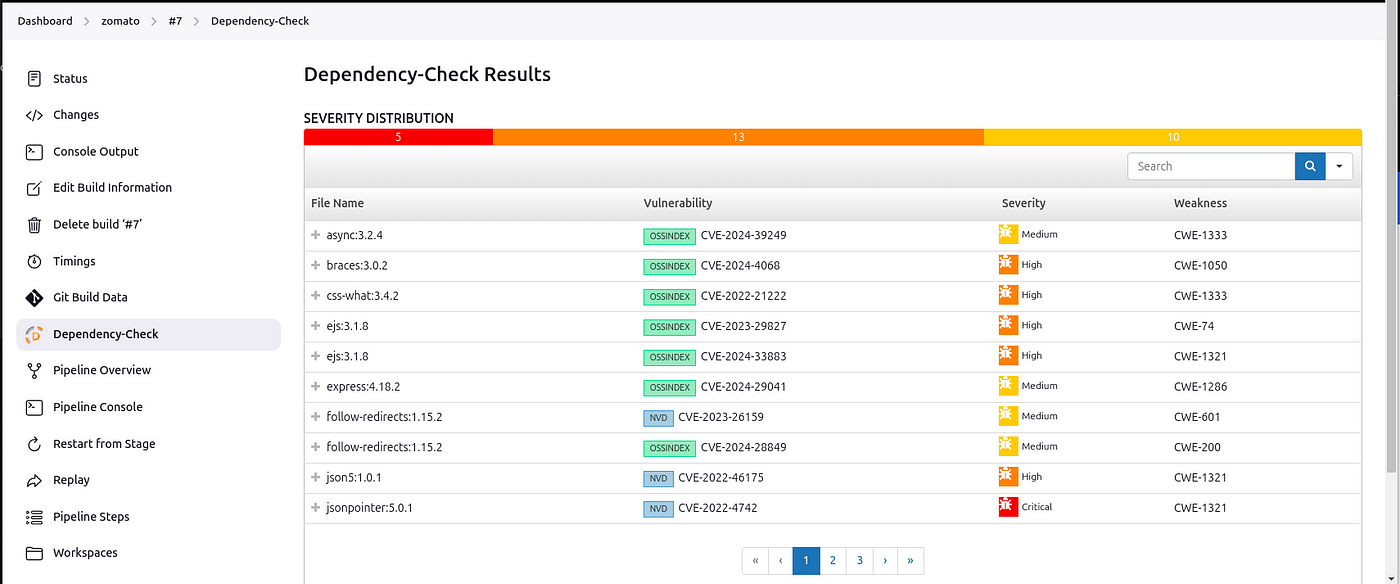
Docker hub registry image
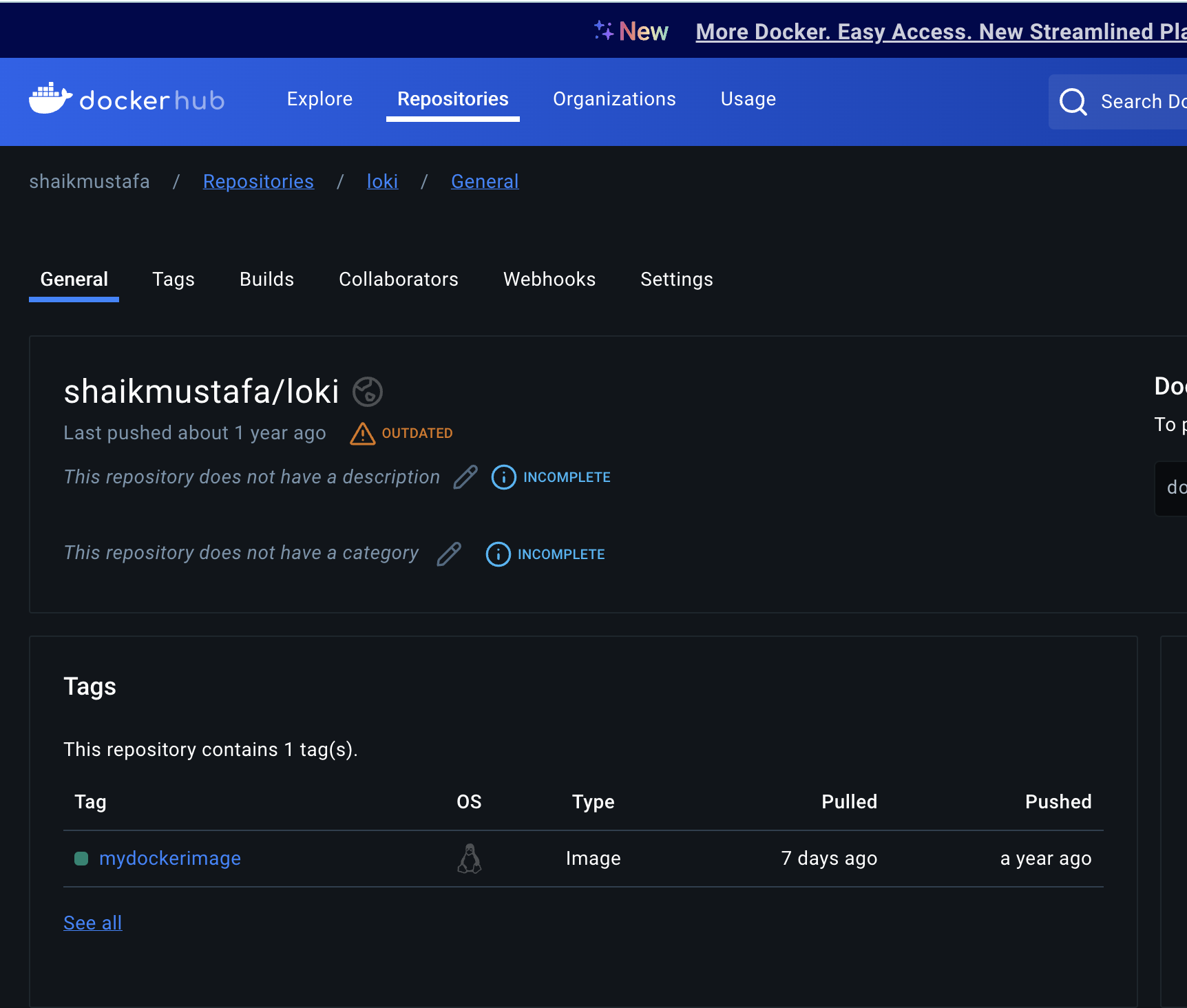
stage view

Deployed website
http://<Jenkins-public-ip:3000\>
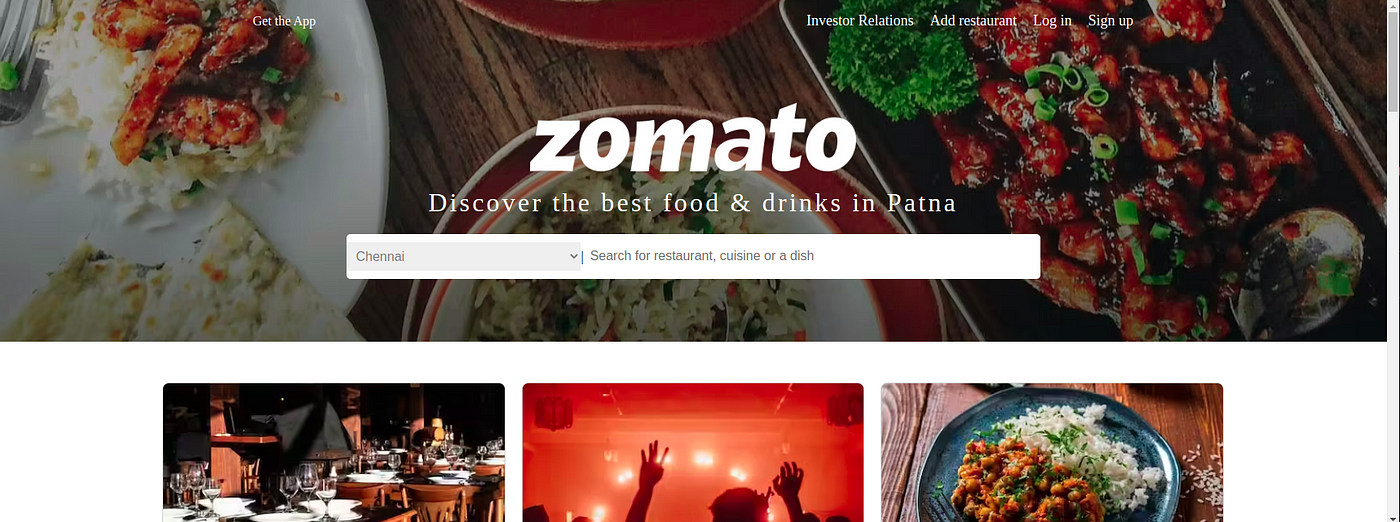
Thanks me later 👋
Thanks for Reading!
I hope you found this article insightful and helpful. If you'd like to connect or discuss more on this topic, feel free to reach out on LinkedIn.
Linkedin: https://www.linkedin.com/in/musta-shaik/
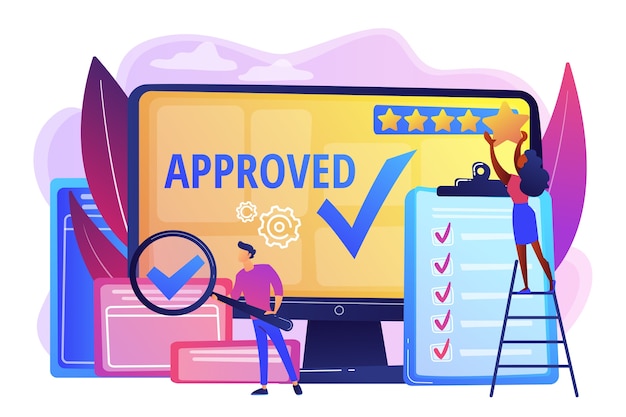
Subscribe to my newsletter
Read articles from Shaik Mustafa directly inside your inbox. Subscribe to the newsletter, and don't miss out.
Written by
